|
Silence is an old friend—one I don’t often get to spend quality time with. But when I do, we give each other a knowing glance, a subtle nod, a familiar smile. It doesn’t matter how many days, weeks, or months have passed—we can pick up right where we left off without any sheepishness. Today, I come in through the front door, take off my coat, and settle into the warm embrace of silence, letting it melt any frost that has accumulated in my heart. Silence knows I’m not able to visit as often these days, but she doesn’t hold a grudge or look at me disapprovingly. She gives me a tender look and welcomes me with open arms – relishing every moment I give her to rejuvenate my soul. And she can work very quickly—a few minutes, hours, (in this case) a day. Any time spent in her company is restorative. She is generous with herself. I was reminded of that this past weekend when I attended a Silent Day of Reflection at the Catholic Apostolate Center’s headquarters at Green Hill. This little oasis sits on 14 acres just a few miles outside of the hustle and bustle of Washington, D.C. and offers ample spaces, both indoor and outdoor, for prayer and reflection. The theme of the day was The Beatitudes. The schedule was sprinkled with powerful moments of prayer: Mass, Adoration, Confession, a reflection on the day’s theme, and Lectio Divina. There was also time for quiet personal prayer. Participants had the opportunity to walk the grounds, enjoy the gardens, pray in the chapel, journal, color, or simply rest. The home of the Pallottine Fathers and Brothers of the Immaculate Conception Province is a treasure, offering a welcome place of retreat, gathering, and prayer. The Pallottines, as well as the staff of the Catholic Apostolate Center, are pleased to invite and welcome those seeking formation, personal enrichment, rejuvenation, or spiritual refreshment to Green Hill and look forward to continuing to provide opportunities to do so. As a wife, mother, blog editor, homeowner, and budding gardener, I find my days often blur in the hasty movement of time. I frequently long for silence and reflection, but do not have the time or space for it. The Silent Day of Reflection organized by the Catholic Apostolate Center was an answer to a prayer and a gift for my spiritual life. After spending the day at Green Hill, I got up from silence’s hearth reluctantly, feeling gently lulled, peaceful, held. It was a refreshing day of encounter with God amidst the beautiful backdrop of nature, and I didn’t want it to end. Not all have the wisdom to seek silence, to receive the gifts she awaits to impart. We often take her for granted, drown her out, or try to replace her—convincing ourselves she is old-fashioned, irrelevant, unnecessary, extinct. She awaits all the same, ever ancient, ever new—the immortal gift of her Creator, the vehicle of His encounter, the respite of all souls. Will you seek her? To learn more about Green Hill and upcoming events, please click here.
0 Comments
For the past few weeks, bishops from across the globe have met in Rome for the XV Ordinary Assembly of the Synod of Bishops to discuss Young People, the Faith, and Vocational Discernment. This is a momentous time for the Church, one in which she has paused from her work in order to listen and dialogue with a powerful age group in our world today: young people. In imitation of Christ Himself, who sat down during His ministry and said, “let the children come to me,” the successors of the Apostles are engaging the young people of the world in order to learn from them, engage with them, and better accompany them on their faith journey. But what does this mean for the rest of the Church? What does this mean for us personally? The Synod is not just an event occurring in Rome, nor a series of documents and pastoral initiatives. Below I have compiled 5 key take-aways from the Synod that we can apply to our own spiritual lives. 1. Invite the Holy Spirit. In his homily for the opening of the Synod, Pope Francis reminded his brother bishops to call upon the Holy Spirit before embarking on their work. “It is the Spirit,” Pope Francis said, “who ensures that the richness and beauty of the Gospel will be a source of constant joy and freshness.” This is true for each of us. Christ left us with the gift of the Holy Spirit after His Ascension into Heaven; the Holy Spirit is our Advocate and remains with us today, present in our hearts as a result of our Baptism. Before embarking on our work on earth, let us call upon the Holy Spirit in order to guide us and ensure we are faithful to our mission. It was the Holy Spirit who transformed the cowering Apostles into bold missionaries, evangelists, and martyrs. The same Holy Spirit leads us today and helps us fulfill our baptismal call. Invite the Holy Spirit into your life, work, and day to day actions in order to live out the richness and beauty of the Gospel that Pope Francis mentions. 2. Listen. The Synod participants have been encouraged to listen intently to what the young people of the Church have to say. This attitude can only be successful if it stems from a posture of humility, an openness to the other, and a flexibility to adapt our perspective based on what we learn. All of us are called to listen to and accompany those we encounter in our day to day life. This is especially true for those of us working in ministry, but can be applied to whatever circumstance we find ourselves in. We live in a culture that seems afraid of listening. Listening is often associated with vulnerability. It opens our minds and hearts to the perspective, ideas, and dreams of the other—whether or not we agree or resonate with these personally. However, “love for the Gospel and for the people who have been entrusted to us, challenges us to broaden our horizons and not lose sight of the mission to which we are called,” Pope Francis said. Listening to another person challenges us to step outside of our comfort zone and acknowledge the truths of the other. Only by listening can we hope to dialogue respectfully with those who might not share our worldview or beliefs. 3. Discern and be silent. After calling upon the Holy Spirit, we need to create a space of silence where we can listen to God’s promptings. For the first time in a Synod, Pope Francis has instituted 3 minutes of periodic silence for participants to reflect on what’s been shared and on what God is stirring in their hearts. This is a wonderful example of ongoing discernment, which invites God into our life and asks Him to guide us in our everyday actions and decisions. “Discernment is the method and at the same time the goal we set ourselves,” Pope Francis said. “It is based on the conviction that God is at work in world history, in life’s events, in the people I meet and who speak to me.” We can also learn from the spirituality of The Society of Jesus, which emphasizes being “contemplatives in action.” This spirit of discernment is radically different from the world of busyness and noise we often find ourselves in, but it also is capable of existing within that world. When we periodically withdraw into the inner room of our hearts and pray to our heavenly Father in secret, we become better attuned not only to His presence in our hearts, but also to God’s presence in those around us. 4. Be flexible. Sometimes, it is easy to come up with preconceived notions of how things ought to be done or to maintain an attitude of “it’s always been this way.” Throughout his papacy, and once again at the beginning of this Synod, Pope Francis has challenged the Church to be flexible and to shatter our temptation to conform. In his homily for the opening of the Synod, he called the Church to “broaden our horizons, expand our hearts and transform those frames of mind that today paralyze, separate and alienate us from young people.” A healthy flexibility is key to our well-being in whatever vocation we find ourselves. Flexibility also relies on humility and allows us to admit that we don’t always have the right answers. When we as a Church are flexible, we are better able to encounter others and work together to seek the truth of the Gospel. 5. Dare to hope, to dream. A great gift that young people can give the Church is their ability to dream. Young people have passion, enthusiasm, hopes, and dreams that offer freshness and renewal to our Church and to the world. This is even more important in a world laden with suffering and problems, where it is easy to succumb to a defeatism or a pessimistic attitude. Pope Francis reminds us that “The future is not a threat to be feared, but is the time the Lord promises us when we will be able to experience communion with him, with our brothers and sisters, and with the whole of creation.” When our faith is rooted in the goodness and beauty of Christ Himself, we are better able to share His joy and hope with the world. Let us learn from the vigor and hope of young people today. May it be contagious, so that others are drawn to ask us for an account of our hope. As Pope Francis concluded in his Address at the Opening of the Synod of Bishops, “Let us therefore work to “spend time with the future … to plant dreams, draw forth prophecies and visions, allow hope to flourish, inspire trust, bind up wounds, weave together relationships, awaken a dawn of hope, learn from one another, and create a bright resourcefulness that will enlighten minds, warm hearts, give strength to our hands, and inspire in young people – all young people, with no one excluded – a vision of the future filled with the joy of the Gospel.” For more resources on the Synod on Young People, the Faith, and Vocational Discernment, please click here. This year, I tried something new for Lent. Instead of giving up sweets or the snooze button on my alarm clock, I felt God calling me to spend more time in prayer with a regular reflection routine. I am someone who has to constantly fill my schedule with things to do and places to go—I knew God was asking for silence in my life. Rather than making an unrealistic commitment during Lent, I selected something I could add to my already established morning and evening routines. I bought a Lenten journal that included a Bible verse and reflection with a corresponding prayer and question for free response. There were a few days I missed an entry and would make it up, but overall I felt I accomplished my Lenten promise and journey. The biggest thing I learned from this Lenten walk with Jesus was the idea of progress and not perfection. As Matthew Kelley says, “we’re imperfect beings striving for perfection, and we have to learn to celebrate our progress.” Becoming more aware of what went on in my day and noticing where I was or was not being my best self made me more aware of God’s presence in my life. I could more easily notice when something in my day was a gift or where He was visibly working on something in my life. As Lent progressed, I found myself yearning to know God in my life more and more. I went to Adoration more, sought out additional reflections through Kelley’s Dynamic Catholic resources, and attended my local women’s group more frequently. I think that’s what Lent should be: being on fire for your faith in God. Our Lenten practices shouldn’t just last for 40 days, but should be 365 days a year—though perhaps not to such a high degree as during Lent. Since Easter, I have continued to journal and have started a gratitude list I add to each day. Here are some thoughts regarding seeking progress and not perfection that I have found helpful to continue working on after Lent:
Question for Reflection: What are some ways your past Lenten journeys have changed your spiritual life after Easter? There’s something to be said for silence. In the absence of vocalizations or other sounds, one can focus more intently in his or her surroundings. At first, it may seem uncomfortable, especially if one is usually talkative and used to a noisy environment. At the same time, one might have difficulty focusing his or her thoughts in silence, suddenly having to contend with an onslaught of mental distractions. Especially in today’s society, one is constantly bombarded with external messages, symbols, and other stimuli in a magnitude never encountered previously. In one way or another, we have become numb. We now find ourselves nearly halfway through Advent, a period of reflection, meditation, and waiting in anticipation of the solemn celebration of the nativity of our Lord. While the rest of the culture may be focused on shopping for gifts and decorating for the holidays, the faithful are called to contemplate the gift of Love made incarnate in a most humble setting over two thousand years ago. Throughout the liturgical year, but especially during this time of Advent, I find that removing myself from the demands of the world and replacing them with the stillness of Bethlehem is not only refreshing, but also an effective catalyst for drawing more deeply into the mystery of the Incarnation: “the Word became flesh and dwelt among us.” (John 1:14) How can silence help us dwell in this mystery? For one, sacred Scripture contains numerous accounts of how effective silence is for drawing one nearer to God and neighbor. Actually, one of my favorite biblical passages illustrates the friends of the greatly afflicted Job sharing in his miseries through their silent presence: “They sat with him on the ground seven days and seven nights, and no one spoke a word to him, for they saw that his suffering was very great” (Job 2:11-13). God is not just with us, however, in moments of suffering or, on the opposite side of the spectrum, moments of majestic power and glory. God’s love continuously invites us to draw near to Him in our daily lives as well. Remember that the prophet Elijah experienced God in the sound of a gentle breeze blowing, not in the preceding bursts of wind, earthquake, or fire (1 Kings 19:11-13). While silence can be beneficial to one’s spiritual life, it itself is not the end of contemplation or meditation. Rather, the focus remains, as it is for all prayer, communication with God. Silence, then, is a medium for encountering God, just as music or the spoken word is employed in liturgy. There are times when words are insufficient or music fails to strike the right chords. In these cases, a silent presence can be the most appropriate expression of closeness, such as in hospice, a cemetery, nursery, hospital, or any other place where the ministry of presence is desired. Similarly, as I prepare myself for a Holy Hour of silent adoration before the Lord in the Blessed Sacrament, I remind myself of the importance of placing myself before God’s presence. Sometimes, a tender gaze of love can be a beautiful prayer in itself. As we continue to wait and reflect during the beginning of the new liturgical year for Christmas, let us pray to be able to free our minds from the things of this world that may distract us from seeking our “heavenly peace,” that is, union with God, the Word Incarnate, Emmanuel. For it was indeed a silent night, as the carol goes, during which our Savior came into this world and the shepherds and magi adored him. The wonder and awe of the miracle had passed over the scholars and authority figures and was instead “given to the childlike” to experience and behold for themselves (Matthew 11:25). In silence, our joy is not diminished, nor is our love any less potent, but through it we can continue to focus our attention and energy towards adoring the King of Kings and Lord of Lords: Jesus Christ, true God and true man. Today we are re-posting a blog from our archives on the many ways we can use prayer to communicate with God. Consider adopting one of these forms of prayer into your weekly routine as you strive to strengthen your relationship with the Lord.
10/8/2015 In a classroom of 25 students, sometimes it gets a little noisy. Just simply saying, “In the name of the Father, and of the Son…” in my Catholic school can quiet a room faster than the loudest bell or my scariest tone of voice. Students can begin the day with prayer, end it with prayer, and say it before meals. However, prayer in a student’s life can come in many forms. Rejoice always, pray continually, give thanks in all circumstances; for this is God’s will for you in Christ Jesus. (1 Thes 5:16-18) In my school, we try and encourage our students to “find God in all things.” This is a beautiful way to appreciate God’s creation and look for Him throughout our lives in the people we meet, places we go, and in everything we do. For second graders, these moments of thankfulness can be tricky to find, but when they discover that it can be as easy as thinking, “Thank you God for the opportunity to be in school today and learn about volcanoes,” the difficulty fades away. Then you will call on me and come and pray to me, and I will listen to you. (Jer 29:12) Another form of prayer I use in my classroom is silent reflection. Responses vary from boredom to feeling peace. I remind the children that prayer is a chance to talk to God about something or sit in the silence and listen for God talk to them. This quiet peace is what helps us reinvigorate our afternoons for more learning! This is the confidence we have in approaching God: that if we ask anything according to his will, he hears us. (1 John 5:14) Recently, journaling has been my students’ favorite form of prayer. We handed out small prayer journals so that each student could write prayers from the heart to God. Letting them know their writing is private and personal was a crucial part to helping them understand that prayer can be an intimate conversation with the Lord about anything and everything. Children learn about prayer from those closest to them, so for those who have children, I challenge you: be a role model in prayer. Take just a few moments in a day, especially with your child, and pray. ■ The Lord’s Prayer is a good place to start if you don’t know what to say! ■ The Rosary is a beautiful way to ask Mother Mary to intercede for us on a regular basis. ■ The Serenity Prayer is a lifesaver for me sometimes, it helps me think about what things in life I can change and what things I cannot solve! It is a truly beautiful prayer to memorize. My students may not realize it now, but one day (hopefully soon) this whole “prayer thing” may click for them. All the eye-rolling and goofing-around may one day stop. If only for a moment, my second graders may actually feel the presence of God. For a moment, they might believe God is answering a prayer request they made. They may earnestly thank the Lord for the day they’ve just had. These many forms of prayer that are presented to them throughout the day may click, hopefully in such a way that they might even try to pray on their own. For more resources on Prayer and Catechesis, please visit http://www.catholicapostolatecenter.org/prayer--catechesis.html. Originally published on 10/8/2015. “Let the word of Christ dwell in you richly, as in all wisdom you teach and admonish one another, singing psalms, hymns, and spiritual songs with gratitude in your hearts to God.” –Colossians 3:16
How do you get to know Jesus the person? How do you get to know God? The Holy Spirit? As Catholics, we are called into an intimate relationship with Christ. Jesus wants for us to know him, and so he left us with the gift of the Eucharist so that we would never be without his physical presence. God can reach us in the silence of his presence. Even so, sometimes it is hard to know what God is saying to us, and it can be difficult to interpret God’s will for our lives. One way of building an intimate relationship with God and interpreting his will is by letting the word of Christ dwell richly within us (cf. Col. 3:16). It is in Scripture that we can get to know Jesus the person: his thoughts, his stories, and his deep love for us. The Bible is important because it is where we can study God, get to know him, and understand his will for our lives. He has left us with words of instruction, comfort, welcome, prayer, and love. Knowing the words of God, his Son, his prophets, and his saints can guide us through life’s joys, trials, and periods of stillness. In the Word of God, we can hear God speaking to us in ways that answer our prayers and help prepare us to be apostles. St. Paul told Timothy that knowing Scripture was essential for living a life of faith: “From infancy you have known [the] sacred scriptures, which are capable of giving you wisdom for salvation through faith in Christ Jesus. All scripture is inspired by God and is useful for teaching, for refutation, for correction, and for training in righteousness, so that one who belongs to God may be competent, equipped for every good work.” -2 Timothy 3:15-17 By “letting the word of Christ dwell in [us] richly,” we can better know Jesus and become more fully “equipped for every good work.” I think about this and my relationship with Christ, and I realize that Christ knows me better than I know him. I lament to him unceasingly, but I don’t always run to Scripture. As I have been taking the time to study God and his Word, I find that my trust in the Lord has strengthened, and I see his love more fully. When I find Scripture that speaks to me and I cling to it – whether it’s through memorization and praying it to myself, setting a verse as my phone background, or making it visible in my apartment – I am filled with patience and peace because I know I have the Word of God and his Spirit with me. I want to challenge you to get to know Jesus better through Scripture. I once witnessed a talk where the speaker reminded us that the Spirit of God speaks to us in the four Gospels (Matthew, Mark, Luke, and John). In addition to prayer, the sacraments, or Christian community, Scripture is where Christ himself reaches out to us. If we took just five minutes a day to read from a Gospel, that would be over 30 hours of quality time with Jesus in a year. We could read 10 minutes a day, and that would be over 60 hours with Jesus in a year! Even by starting with baby steps, we can build a relationship and truly call Christ our friend. Jesus himself tells a parable of a sower planting seeds, where he explains “the seed is the word of God” (Luke 8:11). For the seed that fell within rich soil, “it produced fruit a hundredfold” (Luke 8:8) and they “are the ones who, when they have heard the word, embrace it with a generous and good heart, and bear fruit through perseverance” (Luke 8:15). May your heart be open and receptive to the Word of God so that it may bear much fruit in you and in the world! In Scripture, Jesus says: “And I tell you, ask and you will receive; seek and you will find; knock and the door will be opened to you” (Luke 11:9). Today, I am asking Jesus to let me know him better through his Word as I commit to five minutes of Scripture reading a day. It will require me to be vulnerable and take action, but in doing so, I open myself to the transforming love of Christ that enables us to become better apostles. If you are not sure where to start, there are many great resources for reading the Church’s daily readings or the Divine Office, which is the Church’s daily prayer comprised of Scripture. When all else fails, just open your Bible and start reading! You can even start by reading the Parable of the Sower in Luke 8:4-15! I pray that God will give you the grace to know his Son through Scripture. May your reading of Scripture lead to a deepened friendship with Christ, creating fruitful soil that bears much fruit! For more resources on Prayer and Catechesis, or to read the Daily Mass Readings, please click here. Alyce Shields is a teacher in Washington D.C. “Let us remember that we are in the holy presence of God.” With these words, I and students of Lasallian schools around the world would pause before class to contemplate and center ourselves on this truth. This call to prayer tended to have the effect of stilling the room, if only for a few moments of silence, but I especially appreciated turning my focus to God before carrying on with my day. Even after I graduated from high school, I was able to cherish this simple ritual even more as I would go through my busy routine at The Catholic University of America. I found that even the simplest acknowledgement of God— this small act of love— would help me endure the challenges of the day. The Church celebrates the feast day of St. John Baptist de La Salle on April 7, though his institutions continue to celebrate on May 15, the date of his original feast day until 1969. Students of De La Salle’s schools may be very familiar with his biography, whose life’s works are the very foundation of their education. De La Salle was born to a wealthy family in Reims, France in 1651. At that time, most children had little hope for social or economic advancement. Seeing how the educators in his hometown were struggling, lacking leadership, purpose, and training, De La Salle determined to put his own talents and education at the service of the children “often left to themselves and badly brought up.” Having donated his inheritance to the poor of the famine-afflicted province of Champagne, De La Salle began a new religious institute, a community of consecrated laymen to run free schools “together and by association,” the first with no priests among its members: the Institute of the Brothers of the Christian Schools, known in the United States as the Christian Brothers. His community would grow to succeed in creating a network of quality schools throughout France that boasted revolutionary educational practices such as instructing in the vernacular, grouping students according to ability and achievement, integrating religious and secular subjects, having well-prepared teachers with a sense of vocation and mission, and involving parents. Today, the Christian Brothers are assisted by more than 73,000 lay colleagues, teaching over 900,000 students in 80 countries. As a “Brother’s boy,” each of my peers and I would learn to take up our studies as well as our friendships with gusto and dedication, being made ever aware of the gifts God had given each of us. The life of De La Salle was especially studied as part of the freshmen curriculum, but each student was expected to emulate his example of charity and spirituality through and beyond graduation. St. John Baptist de La Salle showed others how to teach and care for young people, how to meet failure and frailty with compassion, and how to affirm, strengthen, and heal. His advice to his community of educators still rings true for the countless students taught in his name: “to do all [your] actions for the Love of [God] … with all the affection of your heart” and to “hold prayer in high esteem as the foundation of all the virtues, and the source of all grace needed to sanctify [yourselves].” The Brothers I was blessed to have as mentors surely strove to follow this example in all aspects of their lives; they’d encourage us to simply be aware of and open to God’s will. Returning to prayer, then, was essential to the ministry of St. John Baptist de La Salle. I would and still marvel over how truly beautiful is the sight of seeing students pray before class, meals, games, and trips —not just out of need or a particular want, but out of love, faithful devotion, praise, and thanksgiving. Especially in times of global, local, or personal strife, the small chapel in the corner of my high school would always contain at least one of my peers before the Blessed Sacrament. Of the many gifts our beloved founder gave to the modern education system, I especially cherish the routine of prayer instilled in my life and that of countless others. Not only would we remember our being in God’s holy presence, but also that God Himself faithfully, lovingly, eternally, and supportively lives in each of us. “Saint John Baptist de La Salle, pray for us!” “Live, Jesus, in our hearts! Forever!” For more resources on Prayer and Catechesis, click here. I am a social monastic. On the Myers-Briggs test, I score almost evenly as an extrovert and introvert. I need my personal, quiet time of reflection, as well as quality time with family and friends. Those who know of my profound love of all things monastic chuckle over my role as the Social Media Coordinator at the Catholic Apostolate Center, while those who know my social side nod their head in understanding. It is this relationship between my introvert and extrovert sides that I feel can be deepened and strengthened in order to promote effective communication and evangelization as the Church envisions them in our world today. In our modern world of social media and globalization, silence and communication seem to be at odds. The two, however, are completely intertwined. As Pope Benedict XVI wrote, “silence is an integral element of communication.” This connection between silence and communication is beautifully portrayed by the fact that we spend nine months in our mother’s womb—in silence and yet in continual communication. It is here that we begin to learn the meaning of communication and what it means to be human. Pope Francis went as far as saying that the womb “is the first ‘school’ of communication.” Anthropology then, shows us from the beginning of our existence that silence is fundamental to communication. Silence enables us to communicate with God, within ourselves, and with the outside world. Our communication must include these three aspects if it is to be effective and fruitful. Pope Francis wrote that the modern world needs “to recover a certain sense of deliberateness and calm. This calls for time and the ability to be silent and to listen.” If we are called to dialogue as witnesses of the Gospel, we must be effective listeners. We must be able to listen to the promptings of the Holy Spirit in our day-to-day lives, to listen to the stirrings of our hearts within us, and to listen to the needs, fears, hopes, and joys of the people around us. May silence and the practice of listening be our foundations for promoting a culture of encounter! This encounter is the entire point of the Christian life, of what it means to be human. In a word, “communication is really about realizing that we are all human beings, children of God,” Pope Francis wrote. We cannot live closed in on ourselves, but must be open to encountering the gifts of those around us. As the Social Media Coordinator at the Catholic Apostolate Center, I believe that social media and technology can help us bring the Gospel literally to all the ends of the earth. Social media fails, however, if it foregoes encounter, if it diminishes dialogue. Our achievements in the world of media are inadequate if they do not call to action, stir hearts, promote dialogue, or champion the true, the good and the beautiful. On January 24th, we received Pope Francis’ message for the 50th celebration of World Communications Day. This day was established by Pope Paul VI after the Second Vatican Council and is celebrated each year on the Sunday before Pentecost, which falls on May 8th this year. This day is meant to help us ponder the significant role of communication, technology, and social media in our world today. It is the fruit of a Church that is willing to read the signs of the times, step outside of itself and engage with the modern world—all of which are embodied in a special way in the papacy of Pope Francis. The Holy Father challenges us to use our communication efforts and channels as bridges that create unity and a space for encounter. He writes: “Let us boldly become citizens of the digital world. The Church needs to be concerned for, and present in, the world of communication, in order to dialogue with people today and to help them encounter Christ. She needs to be a Church at the side of others, capable of accompanying everyone along the way. The revolution taking place in communications media and in information technologies represents a great and thrilling challenge; may we respond to that challenge with fresh energy and imagination as we seek to share with others the beauty of God.” Let us go forth boldly! To learn more about Catholic Media, please visit our resource page here. Invest me, O Lord, as a new man, who was created by God in justice and the holiness of truth. Amen. With this prayer, I and my fellow altar servers finish vesting for Mass. By no means is everything ready: the candles need to be lit, the Missal has to be set, the vessels have to go out to the credence table, and Father has yet to first arrive and then share his personal preferences for helping him throughout the celebration, among other details and roles. Even as an altar server for eleven years, I remain mindful that to assume I know how everything will play out during the liturgy could prove embarrassing. Yet the Mass will continue, the Eucharistic Sacrifice will still be offered, and our Lord will still be present as the community gathers to pray and give praise to God. The presence of an altar server, then, is by no means critical to the ecclesial prayer, but, as the name suggests, is purposed to serve the presider as well as Jesus Christ, the eternal High Priest. For me, the chance to serve at the altar in this capacity affords me the opportunity to participate more fully in the liturgy and so deepen my faith. Beyond the initial excitement of being able to wear a cassock (Galatians 3:27), this ministry requires that I remain more attentive and alert throughout the Mass than if I were among the congregation. At the same time, being in a place of privilege near the altar and the presider helps me to realize firsthand Jesus’ active presence in every liturgy. In my experiences of serving at my home parish, as part of the University’s Campus Ministry, and in the Basilica of the National Shrine, some of the ways this happens is carrying the wood (or metal) of the Cross during the processions (Matthew 16:24), bringing forth the light of the candles (Matthew 5:14), holding (and reading) the prayers in the Roman Missal for the presider, swinging a thurible (Psalm 141:2) and other simple-yet-significant tasks. Of course, the altar server is not to be the focus of the Mass; if anything, the server must be a reminder for the congregation, when their eyes wander, to conduct oneself worthily, attentively, and devoutly; by every action and example at the altar, the altar server brings glory to God and souls to the Church. Certainly in my experience, there is the temptation for the altar server to feel smug or prideful of being able to contribute to the liturgical life of the Church in this way. But then I am also reminded that the role of the altar server is to help keep the order of Mass flowing smoothly: there are tasks to complete and to complete well… and there is great pressure to not degrade what Fr. Frederick Faber called “the most beautiful thing this side of heaven” by haste, carelessness, or inattention! The altar server then uses that faithful completion of the work to reflect upon the service of Christ during ministry, to imitate such Love and give oneself totally to others (Mark 9:35). With all that the altar server does in the presence of the congregation, there is also that which is done out of their sight both before and after Eucharistic celebrations. There is something beautifully intimate about being the only one in a church while setting or cleaning up. In the silence and the stillness, it’s just Christ (present in the tabernacle) and the altar server, the Lord and His faithful servant. How many times have I been able to find comfort in the prayers I silently offered in those moments! Finally, when the priest arrives, it is like welcoming an old friend as we go over the liturgical details for the day before entering into a casual discussion of our lives. By the time Mass ends, the priest and I have deepened a sort of fraternal bond as we participate in so important a celebration. When we get to the sacristy however, we don’t pat ourselves on the back but immediately bow to the Crucifix, remembering how the Mass transcends our individual piety--it is for the benefit of all and for each: Pro sit. Pro omnibus et singulis! In a classroom of 25 students, sometimes it gets a little noisy. Just simply saying, “In the name of the Father, and of the Son…” in my Catholic school can quiet a room faster than the loudest bell or my scariest tone of voice. Students can begin the day with prayer, end it with prayer, and say it before meals. However, prayer in a student’s life can come in many forms.
Rejoice always, pray continually, give thanks in all circumstances; for this is God’s will for you in Christ Jesus. (1 Thes 5:16-18) In my school, we try and encourage our students to “find God in all things.” This is a beautiful way to appreciate God’s creation and look for Him throughout our lives in the people we meet, places we go, and in everything we do. For second graders, these moments of thankfulness can be tricky to find, but when they discover that it can be as easy as thinking, “Thank you God for the opportunity to be in school today and learn about volcanoes,” the difficulty fades away. Then you will call on me and come and pray to me, and I will listen to you. (Jer 29:12) Another form of prayer I use in my classroom is silent reflection. Responses vary from boredom to feeling peace. I remind the children that prayer is a chance to talk to God about something or sit in the silence and listen for God talk to them. This quiet peace is what helps us reinvigorate our afternoons for more learning! This is the confidence we have in approaching God: that if we ask anything according to his will, he hears us. (1 John 5:14) Recently, journaling has been my students’ favorite form of prayer. We handed out small prayer journals so that each student could write prayers from the heart to God. Letting them know their writing is private and personal was a crucial part to helping them understand that prayer can be an intimate conversation with the Lord about anything and everything. Children learn about prayer from those closest to them, so for those who have children, I challenge you: be a role model in prayer. Take just a few moments in a day, especially with your child, and pray. ■ The Lord’s Prayer is a good place to start if you don’t know what to say! ■ The Rosary is a beautiful way to ask Mother Mary to intercede for us on a regular basis. ■ The Serenity Prayer is a lifesaver for me sometimes, it helps me think about what things in life I can change and what things I cannot solve! It is a truly beautiful prayer to memorize. My students may not realize it now, but one day (hopefully soon) this whole “prayer thing” may click for them. All the eye-rolling and goofing-around may one day stop. If only for a moment, my second graders may actually feel the presence of God. For a moment, they might believe God is answering a prayer request they made. They may earnestly thank the Lord for the day they’ve just had. These many forms of prayer that are presented to them throughout the day may click, hopefully in such a way that they might even try to pray on their own. For more resources on Prayer and Catechesis, please visit http://www.catholicapostolatecenter.org/prayer--catechesis.html. The first time chant roused my senses occurred on a 5 day Ignatian Silent retreat. I remember being entranced by the music—the repetition, the words, the rhythm. We were allowed to sing only for Mass and during the Stations of the Cross. It was a small chant from the ecumenical Taizé community that mesmerized me as we walked in the candlelit night from station to station. I remember singing it to myself over our winter break and in the weeks after. What was this Taizé community? I researched Taizé online and, to my surprise, was bombarded with YouTube videos and hundreds of songs from the community located in the Burgundy region of France. I ordered two of their CDs online and soon listened to nothing else. I grew more and more in my love for anything monastic: silence, routine prayer, chant, the Divine Office. I began starting my days with silent prayer, going to daily Mass and listening to chant rather than my usual list of Top 40 Hits. The music had a way of easing my heart, elevating my soul, transporting me to a higher world. I remember telling my bewildered roommate once as I got ready for the day, “You just don’t hear music like this anymore. This brings you to contemplate something bigger than yourself!” I continued to intersperse monastic spirituality into my days throughout the rest of my college experience and thereafter. While in Paris the summer after graduation, I stopped into the Church of St. Gervais for evening vespers and got lost in the beauty of the chanting of the Monastic Fraternities of Jerusalem, an order which entered the old church in white robes that glimmered underneath the stained glass windows. From there, I spent a week at the Taizé community I had come to love. My spiritual quest continued that summer after I flew back to the United States and spent a month at a Benedictine monastery who chanted the Divine Office in Latin. The music became the breath and heartbeat of my prayer life, an easy medium through which I could converse with God. The chants enabled me to praise and thank God with phrases that frequently came straight from Scripture, giving me words often better than my own and breathing new life into Word of God. Gregorian chant takes its name from Pope St. Gregory the Great, whose feast we celebrate today. Though historians argue over his precise role in the history of chant, Gregory the Great has been named a Doctor of the Church—joining St. Augustine, St. Ambrose and St. Jerome. Gregory, who entered a Benedictine monastery in Rome and eventually became an abbot, was the first pope to be elected from a monastery. During his life, he founded 6 monasteries on his estate. Though Gregory’s association with Gregorian chant is disputed, his love of the monastic life cannot be. (American Catholic) I can’t help but connect with Gregory’s monastic background; and I understand his love of it. I spent much of my summer after graduation as a pilgrim or guest at several spiritual havens because my soul yearned to spend time with God amidst nature, the sacraments and routine prayer. The music and chant were the glue that held these beautiful pieces together during my journeys—adding an almost mystical quality to my prayer life. As a result, I learned what St. Paul meant when he wrote, “pray without ceasing.”(1 Thess. 5:17). The words of chant often stuck in my head, I learned how to sing, to pray, unceasingly without ever having to open my mouth. Chant has a way of ingraining itself into your very heartbeat. We can learn much from the monastic life, which has guided thousands of men and women like Pope Gregory the Great towards holiness. By incorporating silent prayer into our days, we are better able to dialogue with God. I invite you this week to start or end your day with 5 minutes of silence in the presence of the Trinity. Rather than asking God for anything, try instead to simply thank, praise or accompany Him. Below is a link to one of my favorite songs from the Taizé community. May it help you in your journey towards praying unceasingly.
To celebrate the Catholic Apostolate Center passing 50,000 "likes" on Facebook, Communications and Social Media Intern Andrew Buonopane created a list of 50 Ways to Enjoy your Faith. This is the first post in a five-part series where we'll share the whole list. Check back on the first Tuesday of the month for another installment! #50 - Go to Confession The Sacrament of Confession is one that many Catholics do not celebrate regularly. Haven’t been in a while? Check your parish website and see when Confession is offered and give it a try again! Need a refresher on the ritual? Check out the Catholic Apostolate Center’s Lenten Resource Page for year-round resources on this important sacrament. #49- Remember to Laugh Laughing is not only emotionally beneficial, but also has health benefits as well! Take the time to find humor where you can! #48 - Learn to appreciate Silence In our busy lives, silence is often hard to come by. When you do have a quiet moment, take a second to appreciate it! #47 - Devotion to St. Therese of Lisieux, whose "little way" taught that holiness can be sought in ordinary, everyday life. Take some time to learn more about this incredible saint, whose feast day is celebrated on October 1st. She can teach us how to find holiness in our daily lives! #46 - Become more active in your Parish Next Sunday, check out your Church bulletin to see what is going on in your parish. See if there’s something you’d like to be more involved in! #45 - Serve the Poor Find a local meal program in your city and learn more about volunteering there. There are many programs and services that need time, talent, and treasure and offer many ways to serve those less fortunate. #44 - View and Reflect on Sacred Art Find an art museum or view a museum’s online collection to see many important works of art that depict sacred scenes. Or check out local art in parishes in your diocese! Many churches contain beautiful works of art such as stained glass windows. #43 - Own a Catechism …or view the new USCCB online Catechism here! The catechism is a great place to turn with questions about your faith or as a resource to learn more about what we as Catholics believe. #42 - Take a pilgrimage Pilgrimages can be to places near or far. In your own diocese, visit a parish or church you never have been before! Or research places such as the St. Jude Shrine, the Basilica of the National Shrine of the Immaculate Conception, or other places of pilgrimage farther away! #41- Devotion to St. Jude St. Jude is a wonderful Saint to pray to when you don’t know where else to turn. He’s the patron saint of hopeless causes and many people find peace in praying to him. #40 - Find a Bible Study See if your parish has a bible study and get involved! Studying sacred scripture is an important way to deepen your faith.
Andrew Buonopane is the Communications & Social Media Intern for the Catholic Apostolate Center Who is stressed out? Anxious? Eager? Caught in this dreadful summer heat and growing tired of their daily routine? “Come to me, all you who labor and are burdened, and I will give you rest,” says Jesus in our Gospel today from Mt. 11:28-30. Who doesn’t like rest? It’s summer, we are in Ordinary Time, and it’s the middle of the week. I don’t know about you, but I could use a little spiritual-pick-me-up! The long days of childish summers spent without a care in the world are gone, and schedules, busyness, and work have taken their place.
Where is God in your day? Is He in the woman at the desk next to you, the one who always greets you with a cheerful “Good Morning”? Is He in the children you see every day, the ones who gleam with such exuberant joy? Is He in the man who doesn’t walk by the homeless man, but generously hands him a full lunch and some change? Is He in the person others see in you? Is He in the rosary you keep in your pocket, but never use regularly? Is He in the daily readings you find here but would never consider forwarding to a friend that day? Is He in you? In today’s society, the world rushes from one thing to the next without hesitation or a second thought. It is often difficult to find a moment for ourselves, and those moments are often eaten up by technology or more busyness. What if we begin to use that moment to ourselves as a moment with Christ? That intentional moment could be found in prayer or contemplative silence, or it could be speaking or listening to those around us. What if we just closed our eyes, imagined Jesus with us, and sat with him for a while. Would your heart be open to listen or would it not even recognize Him with you? Today’s Gospel says, “Take my yoke upon you and learn from me, for I am meek and humble of heart; and you will find rest for yourselves. For my yoke is easy, and my burden light.” As we continue on this journey of the New Evangelization, we are called by the Holy Father to infuse our busy lives with the peace and love of Christ. In Christ’s peace we find His love, and in His love we find our peace. Krissy Kirby is a recent graduate of The Catholic University of America in Washington, D.C. with a degree in Early Childhood Education. I have a very distinct memory from when I was a little girl (okay, twelve years old…) of anxiously awaiting the Christmas morning tradition of opening up Christmas presents. I was so excited that instead of waiting for the parental mandated 6:15am wake up call, I did it my way. I changed the time on my alarm clock, woke up my whole family and demanded that we start Christmas a little early. This moment of impatience several years ago plays into a much larger reality about this world that we live in – we are so anxious to get to the final destination as quickly as possible that we forget that the journey is just as important as the destination.
That is what Advent is – the journey to Christmas. The word itself comes from the Latin word adventus, which means “coming.” In the midst of the craziness of the holiday season–peppermint mochas and Hallmark Christmas movies included—it is natural to feel like these weeks leading up to Christmas are all about the countdown, and not about the coming. Just as I was all too anxious and turned the clock forward to get my Christmas day started, it is easy to wish away these days of simple waiting and trade them in for the hustle and bustle of Christmas Day. In an effort to more fully appreciate this journey to December 25th, it is necessary to find ways to live out this coming in our own lives. Practically, what does this mean? It means recognizing that the Advent journey requires silence, prayer and most importantly perseverance. Although everyone loves a good peppermint mocha, it is through these three things that we can ready the way for the coming of our Lord at Christmas. Although seemingly impossible, finding silence among the chaos of these days can be done in simple ways–whether it is turning off that Josh Groban Christmas song that has been playing on repeat in the car or taking the chance to catch one’s breath between glasses of eggnog at a family Christmas party. Finding times for prayer can be as unassuming as waking up five minutes early to read that day’s Mass readings or saying a Hail Mary when we are stressed. Lastly, perseverance is not only a necessity of the Christian life, but a necessary part of a peace-filled Advent. The most beautiful part of these days before Christmas is that the destination of our journey is not a rigged alarm, but God Himself in the unassuming form of a baby. This innocence of the baby Jesus reminds us that this season is a time for simple acts of faith, acts of faith that both allow us to appreciate the gift that is waiting for us and the journey that makes it possible. Lauren Scharmer is a senior at The Catholic University of America and is active in retreat and youth ministry in both the Archdiocese of Washington and the Diocese of Arlington. They came to Capernaum and, once inside the house, he began to ask them, “What were you arguing about on the way?” But they remained silent. They had been discussing among themselves on the way who was the greatest. Then he sat down, called the Twelve, and said to them, “If anyone wishes to be first, he shall be the last of all and the servant of all.” Taking a child he placed it in their midst, and putting his arms around it he said to them, “Whoever receives one child such as this in my name, receives me; and whoever receives me, receives not me but the One who sent me.” – Mark 9:33-37
Here, we have another classic example of Jesus’ disciples screwing up. I love them for that. In my struggle to figure out how I can better receive Christ, the knowledge that these great saints also constantly screwed up keeps me from spiritual perfectionism, and instead lets me focus on growth. In this particular case, the disciples failed to discern that concern for the welfare of others needed to trump their own ambition. In my circles of Catholic emerging adults, we talk a lot about discernment, and there is an ever-growing area within practical Catholic spirituality about how to practice discerning well. We discern marriage or religious vocation; we discern where to begin a job search; we discern whether even to begin that job search or go on for more education. We discern our roles within changing friendships. It’s so common that among my friends, discernment is even tossed around as a joke, such as when we “discern” whether we should order another pizza for the game watch party. However, what struck me in this Gospel passage is the fact that the disciples clearly had to practice something else before moving on to discernment. The prerequisite to discernment must be a well-formed conscience. The disciples had no idea what they should have been talking about along the road, but they were ashamed when Jesus asked what their conversation was – they knew, deep down, that who was the greatest among them certainly wasn’t a question worth their consideration. Was that gut feeling present when the conversation started? The Catechism of the Catholic Church §1779 explains the need for introspective vigilance, and quotes the advice of St. Augustine: It is important for every person to be sufficiently present to himself in order to hear and follow the voice of his conscience. This requirement of interiority is all the more necessary as life often distracts us from any reflection, self-examination, or introspection: “Return to your conscience, question it… Turn inward, brethren, and in everything you do, see God as your witness.” (Saint Augustine) If we are truly going to discern as often as we profess about matters great and small, we need to attend to this interiority. Prayerful discernment, or choosing between good things, is hard enough. It becomes much harder if you can’t see what is not of God and can’t rule that out immediately. Today is the memorial of Teresa of Avila, a great contemplative. She certainly believed that when you don’t distract yourself with things that aren’t worth filling your mind, that’s when you can hear God. In Teresa’s meditation on the Song of Songs, she warns her religious sisters against “false peace” with oneself - a “peace” that anesthetizes and atrophies the soul. She took the time to identify nine kinds of false peace, which can stymie our growth into the disciples that God created us to be and which Christ calls us to be. We are each like the disciples in this Gospel: imperfect, but called by Christ to recognize when we could have done better. When we recognize the wrong questions, we can begin to discern which are the right ones. The disciples didn’t remain at peace with their pride, and grew into some of the greatest servants of others. For myself, I pray that I can stay away from the false peace that would make me complacent with the children and adults whom I serve as a parish director of religious education. Lord, help me to receive You in them. Laura Berlage serves as Director of Religious Education for Incarnate Word Parish in the Archdiocese of St. Louis. |
Details
Archives
July 2024
Categories
All
|
About |
Media |
© COPYRIGHT 2024 | ALL RIGHTS RESERVED



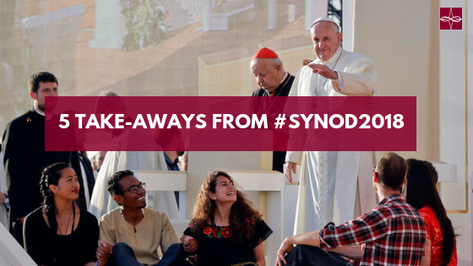







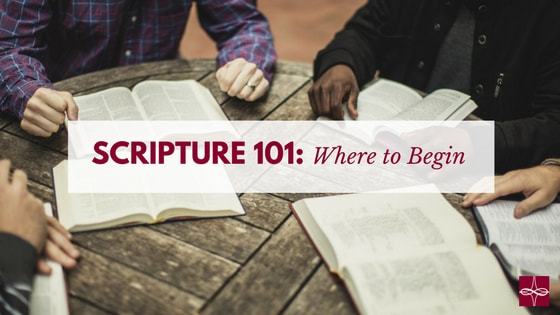
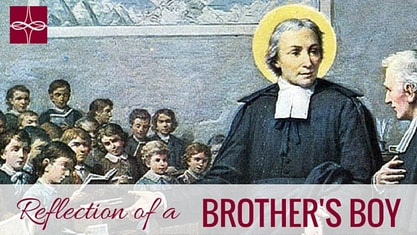

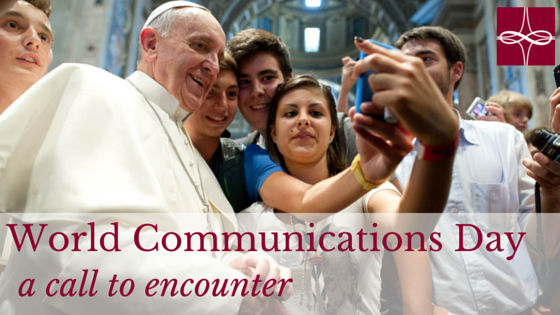

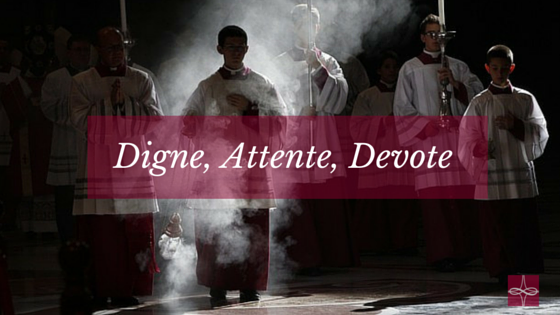



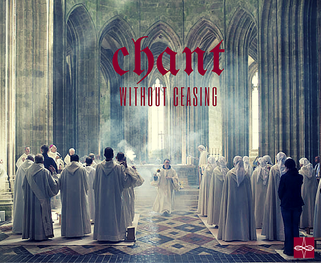

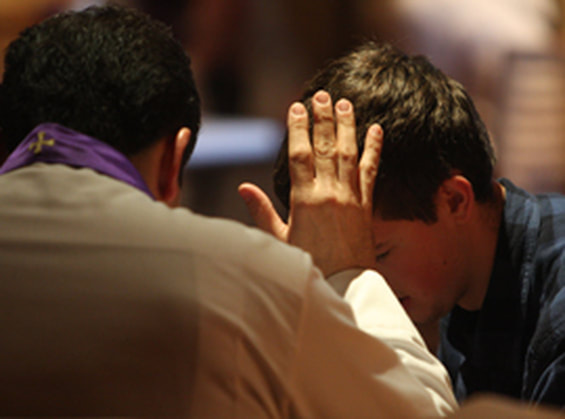


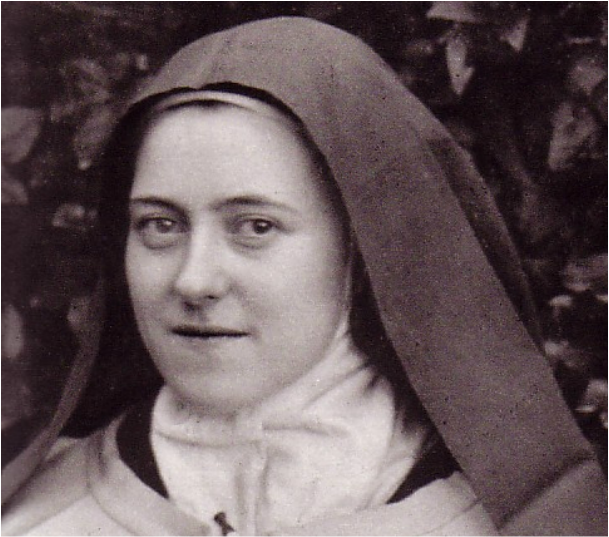
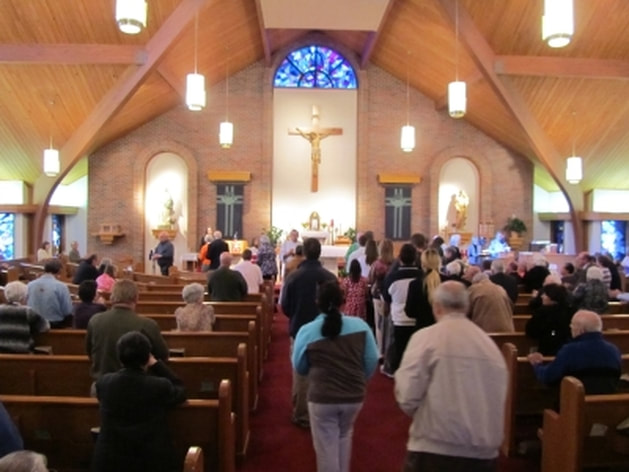
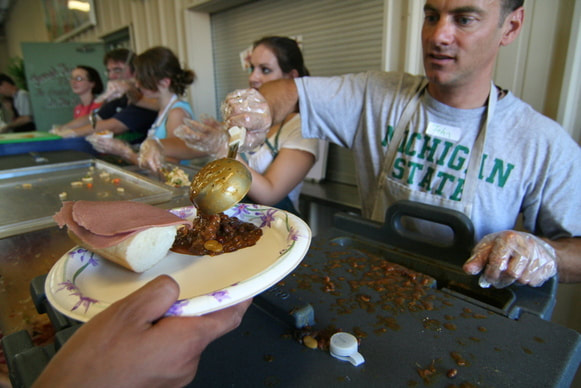
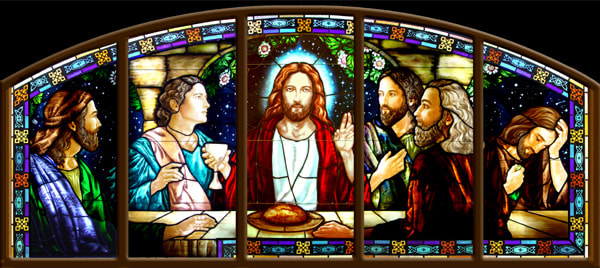
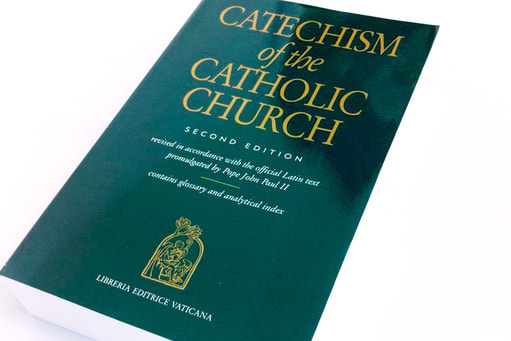
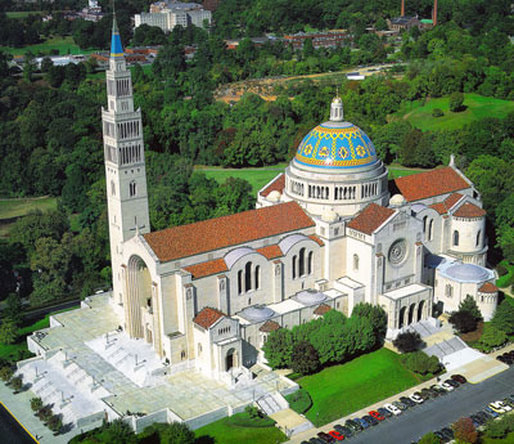

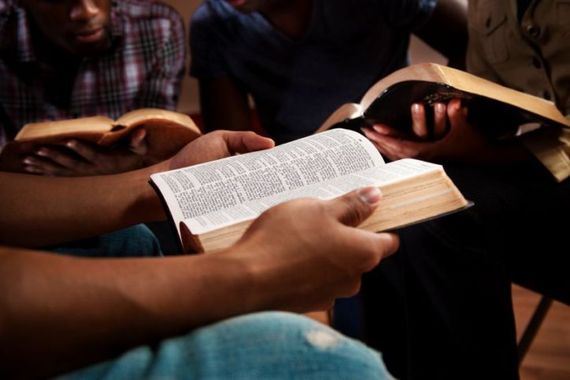


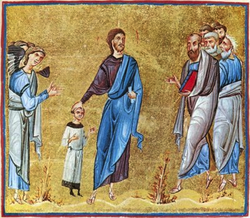
 RSS Feed
RSS Feed